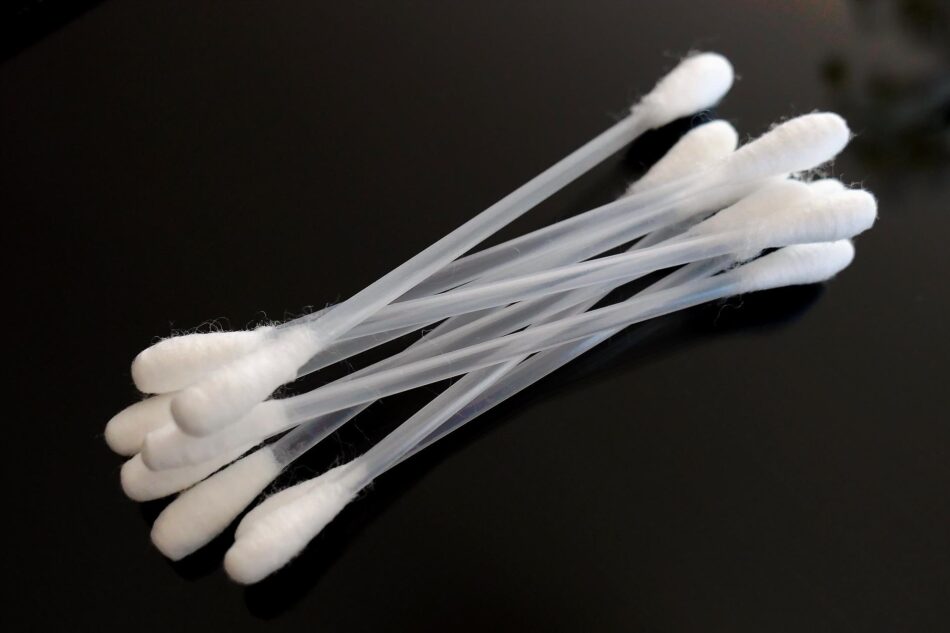Prepare Your Business for New Food Waste Legislation in the UK
From 31 March 2025, most UK businesses must arrange separate food waste collections. Learn and prepare for the new food waste legislation in the UK.

Cotton wool is widely used in both the home and commercial world for many types of applications. Available as pads, balls, or on the end of cotton buds and with high absorbency, it’s mainly used to clean the skin, apply liquids, bathe wounds, and plug test tubes in laboratories.
Outside of the home places like hospitals, care homes, and laboratories can use cotton wool regularly and therefore create plenty of associated waste. It’s important you know what to do with used cotton wool for safe and green disposal. Discover everything you need to know about disposing of and recycling cotton wool.
Cotton wool was first imported to the UK in the 16th century when it was made from a combination of yarn or linen. By 1750, the production of cotton cloths was taking place alongside the import of raw cotton.
A US-born inventor named Eli Whitney patented the cotton gin in 1794. This was a machine that changed the way cotton was produced by removing the cotton seeds from cotton fibre. This significantly sped up the production of cotton. In 1880 Dr Joseph Sampson Gamgee invented Gamgee Tissue – a cotton wool and gauze surgical dressing.
Cotton wool is made up of silky fibres that are taken in their raw condition from cotton plants. The fibres are composed of approximately:
Impurities such as any seeds from the cotton plant are extracted, first. Then the cotton is bleached using sodium hypochlorite or hydrogen peroxide. Finally, the cotton is sterilised before it’s ready for use as cotton wool.
No, unfortunately cotton wool cannot be recycled. There are a few reasons for this – mainly because once it’s used it may be contaminated with whatever other materials or elements it absorbs. Technically clean and dry cotton wool made from 100% cotton is biodegradable, but it’s rare that you need to get rid of fresh cotton wool.
You should place any used cotton wool in your rubbish bin or general waste bin to dispose of it. Sadly, cotton wool is not recyclable so should not go in any other bin. You also can’t really clean and reuse it, so disposing with other non-recyclable waste is the safest option.
Most cotton wool isn’t compostable as while it’s a natural fibre, cotton wool becomes contaminated quickly when used. This could be with the likes of facial toner, nail polish remover, or mascara. Cotton wool should not be flushed down the toilet as it may expand when put in water, which can cause blockages.
When cotton wool is collected alongside general waste, it will either end up in landfill or be incinerated. In some cases, it can be processed and used as a fertiliser or improver.
There are various other materials you can use as an alternative to cotton wool that are more sustainable. These include:
Cotton wool has become a well-used household staple for many of us. The cotton is often picked, packaged, and transported from far away to the UK – so lots of energy and time goes into producing it. And as cotton wool cannot be recycled it’s not the most sustainable material to use.
Plus, it takes approximately 20,000 litres of water to create 1kg of cotton. This is equivalent to a pair of jeans and a t-shirt, or almost six months of water for the regular person. Cotton farming is also the reason we have 24% of insecticides worldwide.
Cotton wool cleansing pads often used in makeup routines are incredibly versatile. However, they’re not disposable, making them wasteful and harmful to the environment.
A few key facts about cotton and cotton wool are that:
Find out more about other rubbish streams.
Get a fast FREE quote for your waste collections
From 31 March 2025, most UK businesses must arrange separate food waste collections. Learn and prepare for the new food waste legislation in the UK.
The study participants included business owners and company employees, revealing unexpected findings about corporate environmental practices.